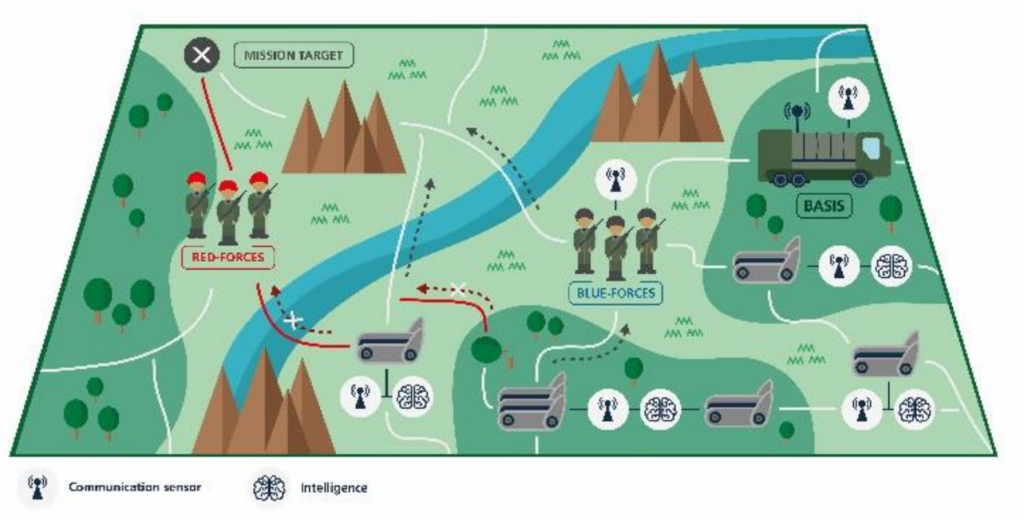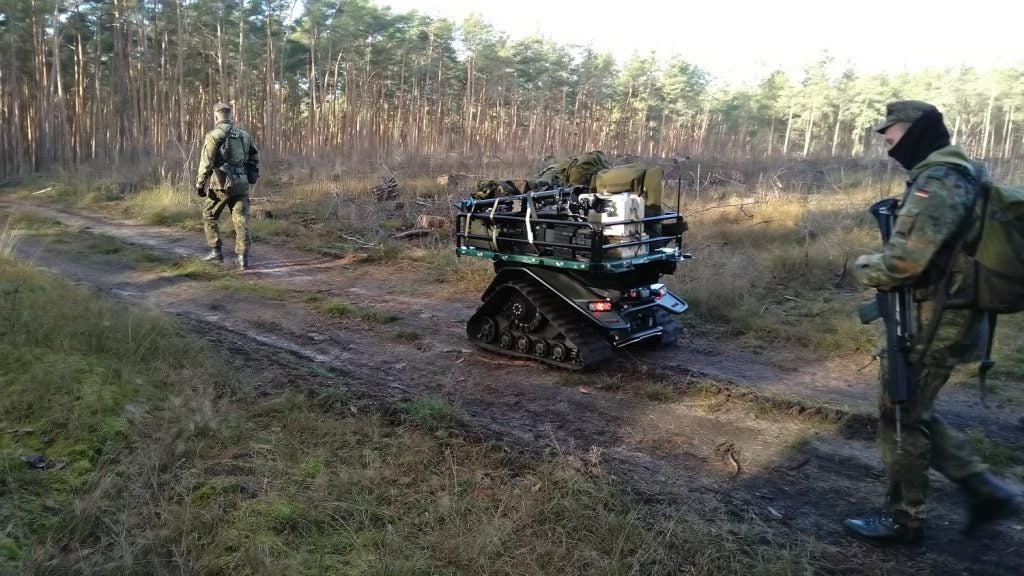EU Kicks Off ARTUS Project
On 10 February, an online meeting kicked off the EU’s ARTUS project. The project is part of the EU’s €19 million Preparatory Action on Defense Research (run by the European Defense Agency) which aims to demonstrate the value of EU cooperation on defense research. 7 high tech projects were selected in 2019, ARTUS among them.
ARTUS, or “Autonomous Rough-terrain Transport UGV Swarm”, is a €1.5 million program which aims, as the name implies, to develop autonomous unmanned ground vehicles (UGVs). According to an official description:
“The supporting swarm will significantly augment their capacity by: providing substantially added payload for the entire equipment through harsh environments, including densely wooded or sloped areas; reacting autonomously to unexpected developments, such as losses of parts of the swarm; increasing the unit’s mobility and flexibility; and increasing the overall protection level of the troops.”

Defense Agency
The project is scheduled to take 2 years and will see cooperation between German, French and Austrian companies.
So what other projects has the EU Defense Agency selected in 2019 as part of PADR?
- CROWN: European Active electronically scanned Array with Combined Radar, Communications, and Electronic Warfare functions for military applications; “a compact, lightweight multi-function radiofrequency system prototype integrating radar, electronic warfare and communication in one single system, without any end-user restrictions”.
- AIDED: Artificial Intelligence for Detection of Explosive Devices; “AIDED will use a set of state of the art Artificial Intelligence (AI) algorithms able to identify unconventional (IEDs) and conventional (buried mines) explosive devices, and autonomously plan offline and run-time missions plans. It will also provide positioning, navigation and mapping to control a fleet of robots that cooperate quickly to identify a safe passage in a high-risk area”.
- QUANTAQUEST: Quantum Secure Communication and Navigation for European Defence; “In the future, quantum radars will make stealth aircrafts obsolete, quantum superconducting magnetometers will detect submarines and quantum computer cryptanalysis will break conventional codes”.
- PILUM: Projectiles for Increased Long-range effects Using Electro-Magnetic railgun; “the electromagnetic railgun (EMRG) is a disruptive technology to launch projectiles over extremely long distance (more than 200 km)”.
- OPTIMISE: Innovative Positioning system for defence in GNSS-denied areas; “proposes a novel architecture to fuse data from different sensors and signals. The project should improve positioning, navigation and timing in areas without access to Global Navigation Satellite Systems”.
- INTERACT: Interoperability Standards for Unmanned Armed Forces Systems; “This standard will allow unmanned assets to be deployed flexibly in different configurations, such as singular deployment, in manned-unmanned teaming or as autonomous swarms independent of organizational or national provenance”.

